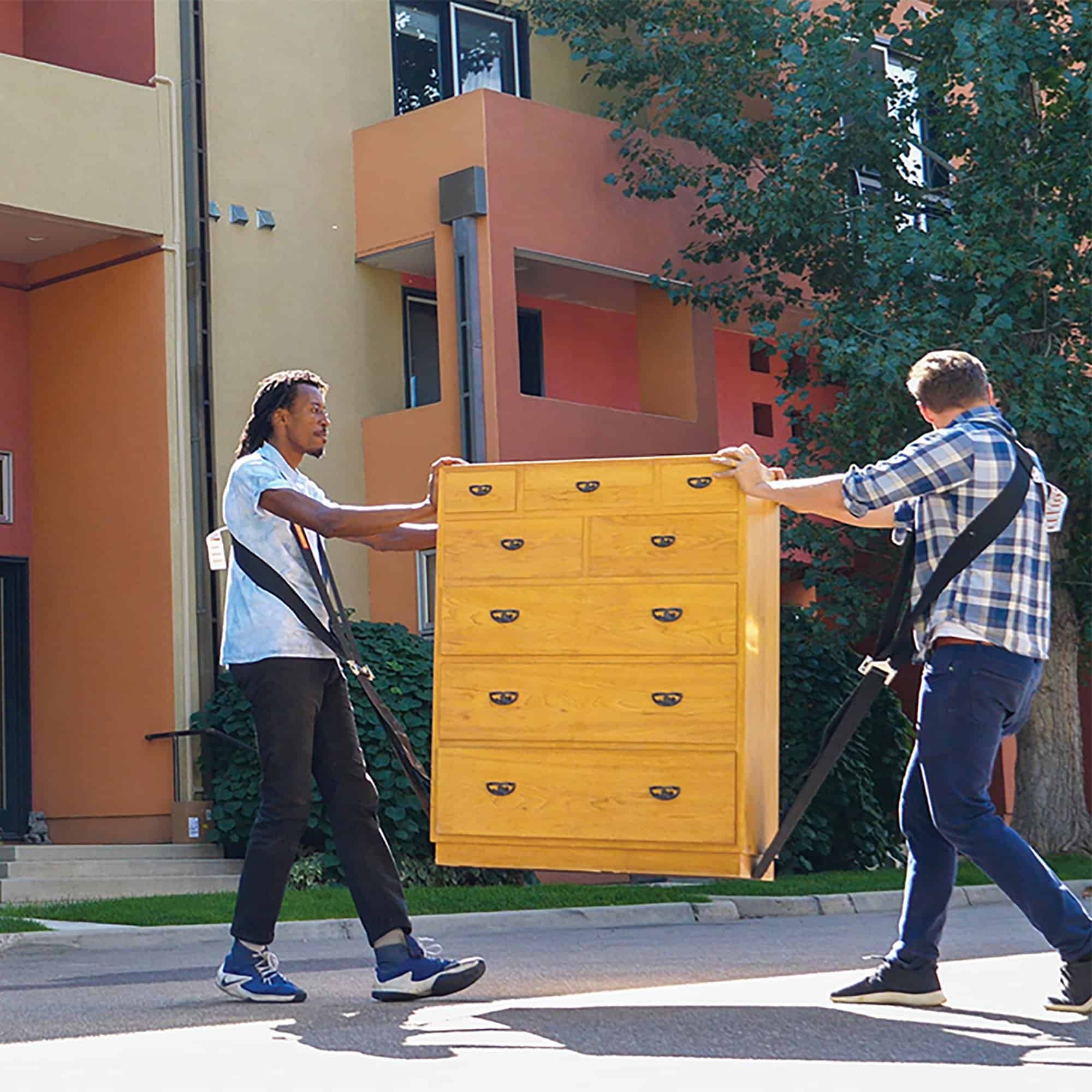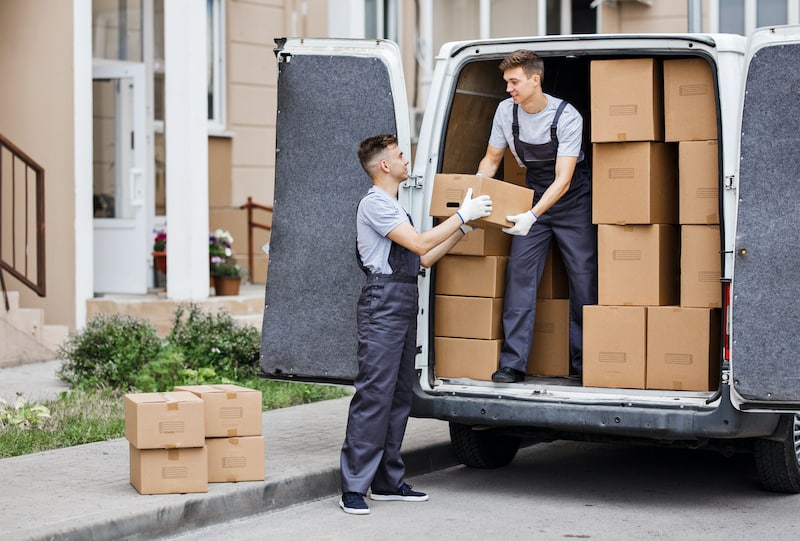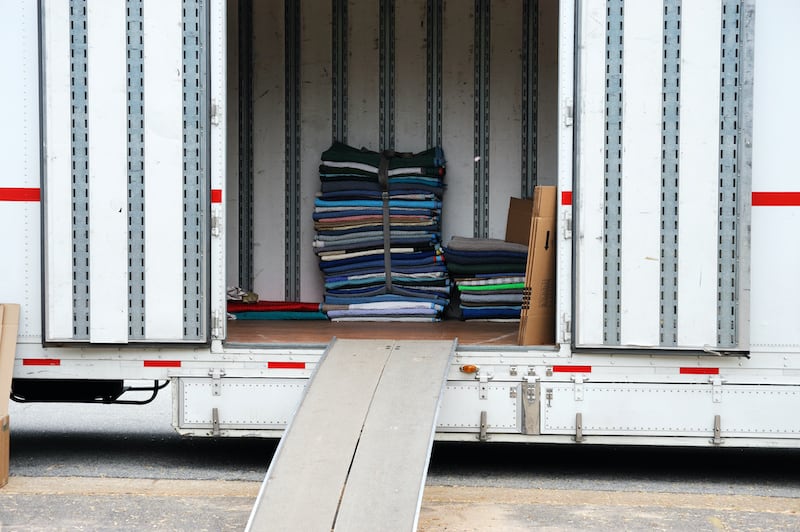As movers, we like to move fast and efficiently. But we also like doing everything right.
But there’s truth to the old adage “Work smarter, not harder.” With that phrase in mind, take advantage of these smart moving tricks and hacks I picked up over the years to help you and your crew from working any harder than you need to … but while still doing that 5-star service you’re known for.
1. Set up as SOON as you step off the truck

What’s the first thing we do when we show up for a move? Ring the customer’s doorbell, say hello, and do a walk-through of the place.
Use this opportunity to have a crew member bring stuff you’ll need into the house. As your customer shows you around,
- Leave a roll of shrink wrap in the living room for the O/S
- Bring your tools inside/upstairs (along with a few plastic bags!) so you can get right to disassembling the beds
- Bring in some markers and tape (if there’s any packing to be done)
Note: Even if you are moving someone into their brand-new home, you’ll still want to bring in tools; they always come in handy. (At minimum, use your free hands to bring in the first few boxes while you’re saying good morning.)
2. Make practical use of the walk-through

Once you’ve seen the upstairs (or the farthest parts of the apartment), grab a box or two and carry them with you back downstairs and/or toward the door. This will keep the move flowing and snappy.
If you need to inventory the customer’s goods first, leave those boxes inside, for now. But if it’s a same-day local move, then carry the beginnings of their stuff out to the garage or driveway (or wherever you’ll be staging things), if not right out onto the truck.
Note: The very beginning is not the time to start hauling heavy furniture down the steps. Leave that sort of stuff for once you’ve got the necessary paperwork signed and the necessary furniture pads prepared.
3. Tape nuts and bolts to the furniture it comes from

Me? I love it when putting a bed frame or a dining room table together, the nuts and bolts are all right there for me, taped in place and waiting for me.
Some people prefer using a parts box, but honestly? Just tape those bits of hardware securely to the bed frame or the underside of the tabletop and you’re good to go.
DON’T tape the bolts THEMSELVES directly to the surface of any metal or wood (please, no!); put all those screws and wing-nuts and everything else in a plastic bag, tape a piece of packing paper around the bed frame or one of the table legs, wrap up that plastic bag of bolts in more paper to prevent any scratches, then tape the protected bag to the bed frame, or the underside, or one leg of the table.
Note: If you are worried about leaving scratches or sticky tape residue on the customer’s bed frame or table leg (or whatever else), or if you just prefer not to tape plastic bags to things, there’s nothing wrong with using a parts box. Go with what works for you.
4. Both you AND the customer should take pictures of everything before you move it!

Before unhooking electronics, it may prove supremely helpful down the road to have pictures of all the cords and wires so we – or the unloaders, or the customer – can see how to hook everything back up again.
The same goes for anything else we will be disassembling: exercise equipment, partition furniture, and even something as simple as a dresser mirror. Of course, take pictures of any pre-existing damage you find, whether it be on an item or somewhere in the customer’s home (e.g., a scratch on the floor or a nick in the wall.)
Note: I recommend using a filesharing website like Dropbox or wetransfer for photos. Both you and the customer can send their pictures to one online folder created specifically for that move.
5. It’s almost always better to empty heavy furniture before moving it

Sure, it might make sense to transport a dresser as is, without emptying it and packing all those clothes in boxes. But depending on how bulky and heavy that dresser is, or how treacherous a staircase might be, to first take out all the drawers and carry them downstairs (and maybe all the way out to the truck). A dresser without its drawers (and all the clothing inside) weighs a lot less than it does when full, making it easier to maneuver without any danger of a drawer sliding out and crashing into the wall or onto the floor.
6. Try shoulder straps

photo credit: northerntool.com
Shoulder straps are for when we are faced with a heavy piece of furniture and a narrow staircase. If you have furniture straps, great, If not, you can use ratchet straps (as long as you remove the part with the ratchet). Either way, using straps can make it a lot easier to control a heavy piece as you ease it down those stairs. Slide it down if it has a sturdy, flat surface (pad it up first!). Otherwise, lift it and go down one step at a time.
7. Pad-up the furniture at the truck, not inside
Sure, if you are going to slide a piece of furniture down a set of stairs you’ll absolutely want to pad it first, and pad it very well.
But for furniture you are simply going to carry out to the truck, wait until later to pad it up. Why? No matter how securely you tape your furniture pads in place, they are bound to slip once you try to carry what they are wrapped around. Your mileage may vary, but I always found it much easier to handle furniture that was not padded, and much more importantly, much faster not to have to do the same thing twice.
8. Save your back with a “set box”

A set box is a box for putting other boxes on top of, and it saves everyone a lot of unnecessary bending and lifting.
Whether moving your customer in or out, it’s a great idea to have a few solid boxes left at key loading or unloading places; when you have one crewmember or two hauling boxes out of the house to the staging area and another crewmember or two hauling them onto the truck, a set box on either end will speed you up!
9. Tape cardboard OVER a furniture pad that’s covering glass

It’s common — and smart — to place a piece of cardboard over the front of a china hutch or a curio, or any piece of furniture with glass that can not be removed and wrapped. Usually, this is done before wrapping the piece up in furniture pads. But for an extra layer of protection — and to give everyone a clear warning that there is glass under that pad — tape another piece of cardboard over the glass ON TOP OF the furniture pad.
10. Bring towels

In hot weather, we sweat. In bad weather, things get wet. In any case, it’s a great idea to have a few towels on hand.
Have CLEAN towels for your crew to wipe the sweat off their hands and arms (and faces and legs too). Have some big old towels your crew can use to wipe their feet and keep the truck ramps as well as the inside of the truck as dry and safe as possible.
And one final tip: Please, don’t run. Yes, we are movers. We love to move. But one missed step, one uneven edge, one loose rock and your extra hustle could lead to a whole lot of hurt, not to mention a slowdown for the rest of the job and maybe beyond.
“Work smarter, not harder.” To that, I’d add, “Work safely.”
The post My Top 10 Moving Tips for Professional Movers appeared first on Moving Advice from HireAHelper.
